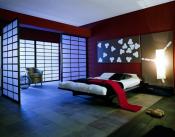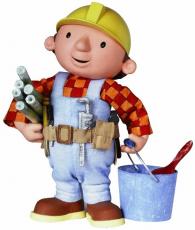Search
Login
Recommended
Glue wallpaper
Before you start gluing the wallpaper on the walls, tidy the ceiling. Finish all the wooden parts, prepare the stepladder. If possible, make a working platform (goats). For the convenience of applying glue to the wallpaper, it is better to use a folding table.
Content.
- Where to start gluing wallpaper
- How to glue the walls video
- Air bubble removal video
- How to paste over corners video
- How to paste the doors
- Pasting window slopes
- Pasting of switches and sockets
- Fireplace pasting
- We paste over the arched niche
- Pasting radiators
- Pasting stairs
Where to start gluing wallpaper
In the classical method of wallpapering rooms, the first piece is placed near the window near the corner, the subsequent pieces are glued on both sides in the direction from the light.
If you start wallpapering for the first time, you can start with the longest solid wall in order to master the basic wallpapering technique before doing more complex work with openings or corners.
To stick properly wallpaper with a large regular pattern, place the first piece, for symmetry, in the center, then continue to glue from the center to the right and left.
You can use the docking of two pieces of wallpaper in the center of the wall. With the right wallpaper sticker, you must consider the rules of symmetry.
How to glue the walls
The walls of the room often do not have the correct angles, so you need to vertically calibrate the walls to stick the first piece of wallpaper, a vertical line is drawn at a distance of the width of the wallpaper from the edge of the wall, with a deduction of 12 mm., So that the first piece comes into contact with the wall (grab angle).
Expand the upper part of the piece smeared with glue, making a margin for trimming at the ceiling, attach a piece of wallpaper to the vertical line.
Acting from the middle in all directions to remove air, gently smooth the wallpaper with a brush.
Remove excess wallpaper from the ceiling and baseboard, brush the wallpaper with a brush.
Using the above technology, stick on the next canvas, when sticking, use your fingers to move the canvas so that the two pieces are precisely joined to fit the pattern.
Remove excess adhesive from the surface with a damp cloth. Roll the edges with a roller for the exact joint of the wallpaper, ensuring that the edges are firmly glued to the wall.
With proper wallpaper gluing, overlap 12 mm. onto an adjoining wall and continue gluing to the other edge of the wall.
Air bubble removal
When wallpapering is applied to walls, small swelling often forms. These swellings usually straighten when the wallpaper dries.
If, after drying, the bubble remains, it can be removed in two ways: you can inject a little glue into it and roll it in, or you can cut the bubble crosswise to the cross, add glue and gently glue the cut petals.
How to paste over corners
With the correct wallpapering over the corner, along the plumb line, make another vertical line, so that the next piece covers the overlap of wallpaper with an adjacent wall.
If the corner piece of wallpaper is wide enough, it can be used as a front page on a new wall.
How to paste the doors
Having glued the walls, reaching the door, once again check the compatibility of the patterns, smoothing the joint with the previous strip with a brush, freely put the rest of the piece on the door.
Mark the top corner of the door frame. Using scissors, make a diagonal cut in this piece of wallpaper to the upper point, unscrew and trim the excess wallpaper, and then again smooth the wallpaper to the wall with a brush, do not forget to leave an allowance of 12 mm. for bending over the top edge of the door frame.
Stick a short piece of wallpaper above the door, dock the next strip with an overlap on the door. In this overlap, again make a diagonal cut and glue the wallpaper on the other side of the door. Residual wallpaper remove.
Pasting window slopes
Correct gluing of slopes, includes the technology of gluing doors, i.e. the same as when working with doors, but this is if the window box is located at the level of the wall.
If the window box is installed in a niche, a piece of wallpaper must be glued so that part of it comes into the opening.
Make horizontal cuts on the top and bottom edges of the niche on this piece of wallpaper, wrap the wallpaper on a side slope, and remove the remains.
Having cut a piece of wallpaper equal in width to the part remaining above the niche, spread it with glue, slip it under the remaining part, wrap around the top of the slope, and roll all the joints with a roller.
Pasting of switches and sockets
Before wallpapering, turn off the electricity.
It is necessary to remove the covers of switches and sockets by gluing strips of wallpaper, carefully cut around the circumference or around the perimeter in the area of \u200b\u200bthe switch or socket, a hole with an inlet of 12 mm. Around the circle, make some notches, wrap the wallpaper, roll it well with a roller and replace the covers.
You can stick it in another way: a piece of wallpaper is glued on top of the switch or outlet, then slots are made diagonally, excess wallpaper is cut off, leaving 6 mm. around the perimeter. After loosening the cover of the switch or socket, slip the cut edges of the wallpaper under it and tighten the cover again.
After the wallpaper has dried, turn on the electricity.
Fireplace pasting
If there is a fireplace, wallpapering the walls is similar to working around doors and windows.
A diagonal cut is made in the part of the wallpaper that overlays the fireplace to the corner of the mantelpiece, ram the wallpaper around the perimeter of the fireplace portal to mark and trim them, make diagonal cuts to the corner, cut the remains, brush the wallpaper along the corners of the ledge of the chimney with a brush.
We paste over the arched niche
When pasting a wall with an arched niche, stick the pieces on the front side of the arch, leaving 25 mm., Cut out the arch opening, make cuts in this edge with scissors so that there are no wrinkles and wrap the wallpaper on the lower part of the arch, smooth it out with a brush.
On the side surface of the arch, attach a strip of wallpaper from the floor to the highest point of the niche, do the same on the opposite side of the arch.
Pasting radiators
If it is not possible to remove the radiators, turn off the heating and cool the batteries.
Using a tape measure, measure the location of the radiator mounting brackets to the wall.
Transfer these measurements to a piece of wallpaper (usually use wallpaper trimmings), make a cut from the bottom to the top of the bracket.
Spread a piece of wallpaper with glue, insert this piece behind the radiator so that the brackets are in the slots, press the wallpaper against the wall, remove the excess on the baseboard. If this method seems difficult, then you can glue the battery on each side only 10-20 cm.
Pasting stairs
The difficulty in wallpapering around the staircase is that you have to stick very long pieces on the side walls.
For this work, reliable scaffolding is needed.
First, the longest piece of wallpaper is glued over a plumb line, 12 mm overlap is made. to the front wall of the shaft of the stairs.
So that the glue does not dry while you are working with a piece of wallpaper, you must apply it very abundantly, fold a long canvas of wallpaper with an accordion and hang it on your hand when climbing the scaffold.
An assistant is needed below, he must support a piece of wallpaper while you stick it.
Squeeze the wallpaper, cut the bottom of the canvas along the baseboard, then paste the subsequent pieces with the same method.
If the railing is attached to the wall, a cut is made in the center of the railing fastening with an inlet, then radial cuts are made so that there are no wrinkles around the railing.
Squeeze the petals around the trim line, bend the wallpaper, and trim the excess.
Smooth the wallpaper with a brush on the wall.





